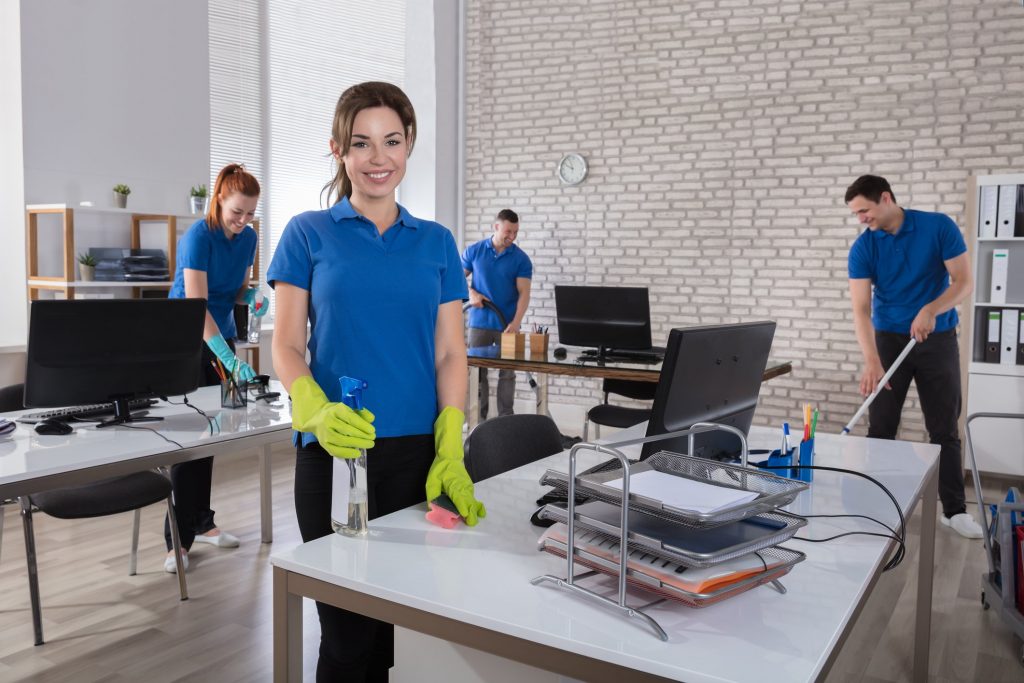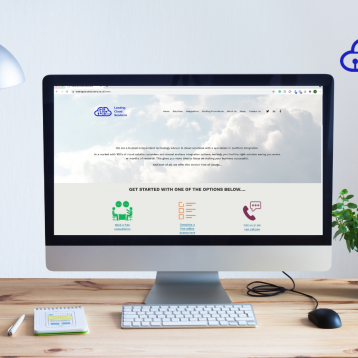While the world is still in the midst of the Covid-19 pandemic, with testing, tracing, and treatment still in progress, and a vaccine or drug treatment many months away, there is a need to consider what it means to transition back to the office. Here, experts give their views on how this can be done, safely!

“Any return to work before a vaccine is available will have employees distanced and possibly masked. Many offices will operate at a reduced capacity, perhaps with staggered workdays and hours. Places where employees normally gather – conference rooms, cafeterias, breakrooms – may be off-limits. Corporate culture as we have known it, with ongoing employee interaction, may never return.” so says S. Ann Earon, Ph.D., president of Telemanagement Resources International Inc. (TRI) and Founding Chairperson of IMCCA, the non-profit industry association for conferencing, collaboration, and unified communications.
Some of the trends welcomed in the last few years, such as ‘hot-desking’ seem alien to today’s culture of ‘track and trace’ and regular deep cleaning. “Office planners are working on a new workplace with new cubicle designs, upgraded ventilation systems, and touchless everything (elevator buttons, door entrances, faucets, etc.). The open workspace environments of today, with employees sitting close together, will be in the past,” says Earon. “Emphasis will be placed on rigorous cleaning protocols that will be followed throughout the day, not just after work.”
Office return?
While the best hazard mitigation may be working from home, at some point some people will want and need to return to an office environment. Others will find working from anywhere more productive and attractive. A recent webinar, hosted by Condeco, revealed that the trend in favour of working from home, established as a consequence of Covid-19, is likely to have a long-tern impact, Webinar presenter Donna Forshaw, VP Sales America at Condeco, said: “I don’t know anybody who goes at the office every day anymore. For most of the globe that’s not even allowed.”
Forshaw reported on the findings of a recent Survey: “The Covid crisis is the first time that many companies allowed their staff to work remotely. The numbers revealed by the Survey, at 30%, are pretty low and I think the number is actually likely higher. Unless you actually have programme in place remote working can be really frowned upon. Companies believes that workers are more productive in the office environment and so that has traditionally been the norm.”
But as being a huge problem for the economy, the pandemic could also be something of an opportunity. Forshaw argues that: “We shouldn’t just go back to the old way of doing things. We have an opportunity to move towards a human-centric workplace. While most people with a desk may occasionally work from home, but in practice many spend most of the day running from one meeting to another in a custom designed space, be it a huddle space or a conference room.”
Generational differences
Different generations of employees react to the enforced changes in the working environment in different ways. Forshaw observes: “Some people are going to be happy about having the necessary technology at home some, while some just want to be in the office and didn’t even think it is possible for members of a global organisation to work from home. Something that is universally recognised is the saving in time and money that home working brings.”
“Most people’s commute in the US is a 90-minute round trip. The ability to save time and money is obvious. Less obvious is the saving on my dry cleaning as we work in T-shirts and jeans. On the flip side, for some people there is a feeling of that social isolation. I have a team of nine people. I love my team. We all get together on weekend and I travel with most of them on a regular basis.”
“The ability to continue to collaborate remotely is key. 84 % of professionals are staggering the workers present in their offices. So it’s really about using technology to help change the behaviour change and mindset of employees. The new normal is about collaboration and the flexibility to work anywhere, productively. People will likely visit their offices for different reasons, perhaps using it as a hub for face-to-face meetings.”
Part-time office work
A poll conducted among the 200 or so webinar attendees selected the option of working in the office one or two days per week as the majority preference. Condeco believes that the return to the office will follow this pattern: “That’s how we’re going to get people slowly back at the office and feeling comfortable. There are some workers who need to be there three, four or even five days. No matter how much the office is used, deep cleaning, at a daily cost of $5 per workplace, is a significant extra cost.”
“People want to know where they can work on any given day.
Imagine a technology that provides a notification, on your phone, that you’re working from home today, or if you’re working in the office today notification that your workspace has been cleaned and prepared. Contact tracing within the office community and beyond will be increasing important. You will obviously need to know who is in the office and which space they have booked,” said Forshaw.
As an example of the costs of the new normal, Forshaw gave the example of a building with 1,000 workspaces. At a cost of $5 per day for sanitising each workspace, a daily bill of $5000 is huge – particularly if only 20% of the workforce is present on any given day.
Video is the norm
In the last few weeks, organisations have had to scale up collaboration tools to account for remote work, improved security capabilities, networking and communications infrastructure. They have also had equip their workforce with laptops and other productivity devices. Videoconferencing will become more common in the office as employees continue to use the technology to maintain social distance. People will join virtual meetings instead of walking to a conference room.
Transitioning back to the office means the need for robust communications tools to share information and collaborate in rich ways, anytime from anywhere. The new workplace environment necessitates an investment in productivity, employee well-being, and, if the right steps are taken profitability. Deployment flexibility is important for interoperability that provides value and drives usage. Employees need to work where they are most productive. Technology simplicity and interoperability will be keys to successful communications.

Workspace sanitisation: In a building with 1,000 workspaces, $5 per day for sanitising each workspace, adds up to a daily bill of $5000 – huge, particularly if only 20% of the workforce is present on any given day.
Contact tracing within the office community and beyond will be increasing important. You will obviously need to know who is in the office and which space they have booked.







